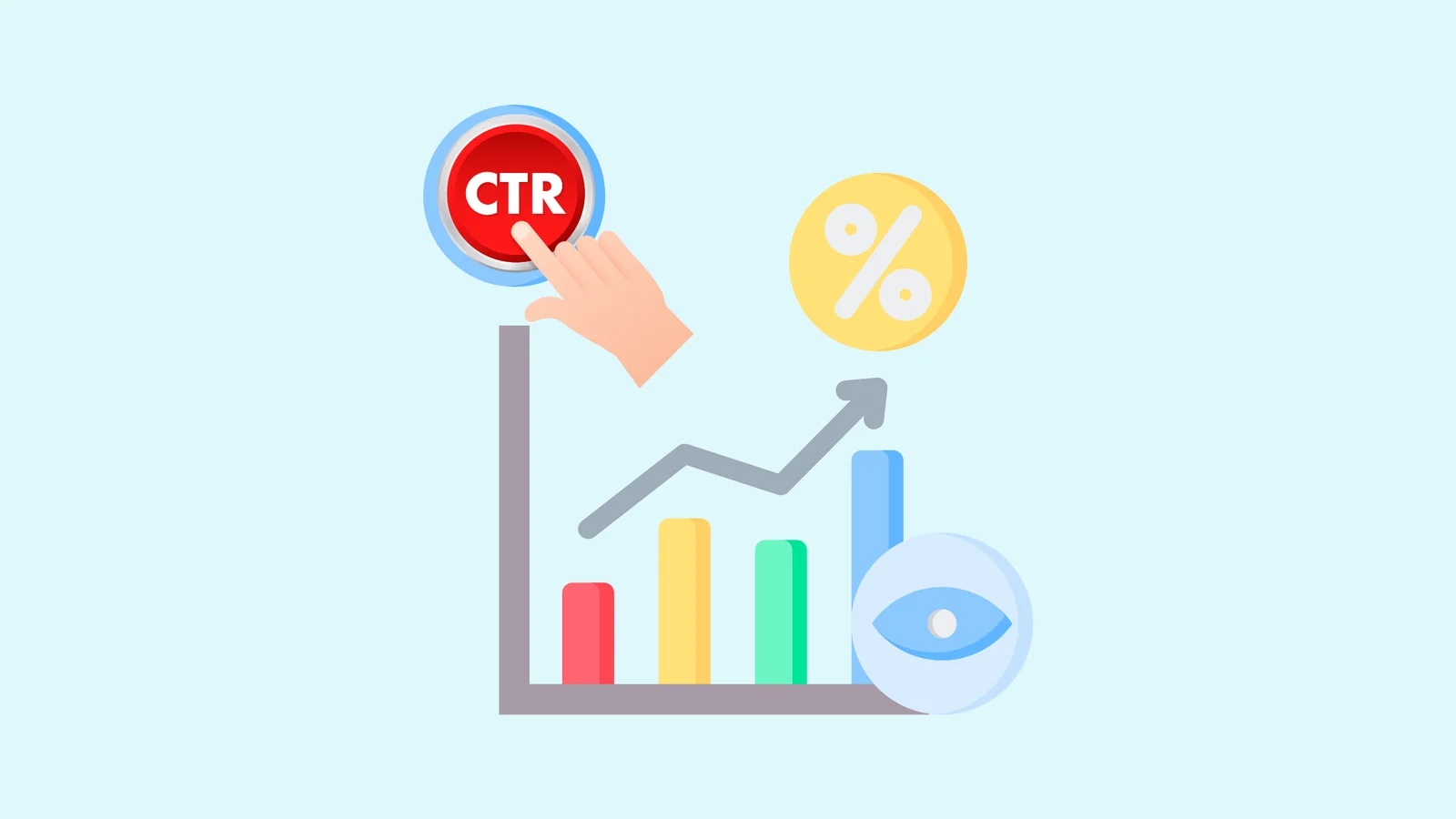If you’re still relying on SEO advice from 2020, we’ve got news for you—the game has changed. In 2025, over 8.5 billion Google searches happen every day (Internet Live Stats), and your competitors aren’t sleeping on those clicks.
Whether you're tracking mobile SEO, chasing voice search trends, or just trying to boost organic traffic, these 70 must-know search engine optimization statistics are your cheat sheet.
We’ve packed this guide with the most recent data, including seo statistics for 2025 straight talk, and a few marketing truths you won’t hear from your agency. Ready to get smarter, faster, and more visible? Let’s do it.
Why Search Engine Optimization Statistics Matter in 2025

You can’t improve what you don’t measure. That’s why search engine statistics and optimization statistics are so important. In 2025, over 8.5 billion Google searches happen each day (Internet Live Stats). That’s a huge number!
These SEO stats help you:
- See what works on search engines like Google
- Track how much organic search traffic your website gets
- Learn how users behave on search engine results pages
- Plan your seo strategy based on real data
- Understand the role of mobile devices and voice search in ranking
Some of the top SEO statistics this year reveal surprising shifts in user behavior and mobile-first strategies. Use these numbers to grow your traffic, reach more local businesses, and get better results.
Global SEO & Search Engine Market Stats

Global Search Engine Market Share Statistics
Most people around the world use search engines every day. But not all search engines are the same. Knowing which ones are most popular can help you focus your SEO efforts.
- The top three organic search results on Google received 68.7% of all clicks, making it crucial to aim for these positions.
- Google holds over 91% of the global search engine market share (StatCounter, 2025).
- Bing has about 3.2%, and Yahoo sits at 1.2%.
- On mobile devices, Google’s share rises to 94%.
- In some countries, Yandex and Baidu still lead local search engines.
- Google Maps and Google Lens are now used more often to start searches than some small engines.
What does this mean for you? Focus your seo strategy on Google, but know your audience. If you're targeting Russia, Yandex might matter more.
Google Search Statistics: Users, Traffic & Reach
Google is massive. You probably use it every day without thinking. But how big is it really? Zero-click searches are on the rise, meaning users often find answers directly on the search results page without clicking through to a website.
- Google processes 8.5 billion searches daily (Internet Live Stats, 2025).
- That’s over 98,000 search queries per second.
- Google users in the U.S. alone reach over 270 million monthly.
- About 60% of all website traffic now comes from Google search results.
- Google Search Console helps millions of businesses track this data daily.
Tracking your Google search traffic regularly helps you know which pages bring in the most users.
What should you do? Make sure your website shows up where people are searching. That’s what search engine optimization is for.
Internet Users & Web Traffic: How Big Is the SEO Playing Field?
Now let’s zoom out. Who’s using the internet, and how does that affect your web traffic? Here’s what the latest seo statistics say:
- There are over 5.3 billion internet users worldwide in 2025 (DataReportal).
- Over 92% of them use search engines regularly.
- Around 55% of total web traffic comes from organic search.
- Mobile users account for more than 65% of all search traffic.
- People spend an average of 15 seconds deciding if they’ll stay on a page.
So what now?
- Make sure your site loads fast.
- Optimize it for mobile devices.
- Use real search engine optimization statistics to guide your decisions.
- Track organic traffic using tools like Google Analytics or Search Console.
Mobile & Voice Search – What’s Changing in User Behavior?

Mobile SEO Statistics: Why Mobile Optimization Is Non-Negotiable
More than half of the world’s search traffic comes from internet users, smartphone users, and mobile users. That’s not just a trend—it’s how people live.
- 63% of Google searches come from mobile devices (Statista, 2025).
- More than half of users (53%) will abandon a mobile site if it takes longer than 3 seconds to load.
- Google uses mobile-first indexing, which means it looks at your mobile site first.
- Mobile internet traffic is expected to grow by 25% each year.
- Mobile search statistics show that local mobile searches often lead to action within 24 hours.
What to do:
- Make sure your site works fast and looks good on phones.
- Optimize images and fonts for smaller screens.
Voice Search Statistics: Are Marketers Really Ready?
People now ask their phones instead of typing, as highlighted by voice search statistics. That’s voice search. It's growing fast—and if your content isn’t ready, you’re missing out. In fact, 41% of American adults admit to using voice search daily, underscoring the need for businesses to adapt to this trend.
- Over 20% of searches conducted on the Google App are performed through voice search, emphasizing the need for optimization in this area.
- Over 40% of U.S. adults use voice search daily.
- Voice search results load 52% faster than typed ones.
- Most voice search queries are long and natural-sounding.
- Smartphone users often use voice while driving or multitasking.
- Only 17% of businesses have optimized for voice search optimization.
What to do:
- Use question-based headings.
- Add short answers using meta descriptions.
- Focus on natural phrases people speak.
Local SEO Statistics That Every Business Should Know

If your business serves a local area, local SEO isn’t optional—it’s essential. People often search for local search queries and services near them using mobile devices or voice. These search engine optimization statistics show how local behavior affects your visibility online.
- 78% of local mobile searches lead to a purchase within 24 hours.
- 46% of all Google searches are looking for local information.
- Local search queries like “near me” have grown by 150% in the last two years.
- Local businesses with optimized listings on Google Maps get 7x more clicks.
- Search engine results pages often show maps before website links in local searches.
- When a local search is made on a mobile device, 18% of these searches result in a purchase within 24 hours.
What you should do:
- Claim your Google Search Console and Google Business profile.
- Add your business to Google Maps and keep it updated. An optimized Google Business Profile significantly impacts Local Pack rankings, making it a critical tool for local SEO.
- Use keywords that include your city or neighborhood.
- Ask happy customers for local reviews.
Content, Keywords, & Link Building – The Building Blocks of Rankings

Keyword Statistics: What’s Being Searched Right Now?
When people search on Google, they use specific words called keywords. Knowing what people type helps you match your content to their needs.
- Over 50% of all search queries are four words or longer.
- The most searched keyword in 2024 was “weather.”
- Long-tail keywords (like “best shoes for walking long distances”) have 2.5x higher conversion rates.
- Keyword-rich meta descriptions can boost click-through rates by up to 30%.
- Google Ads Keyword Planner remains the most-used tool for keyword research.
What to do:
- Use simple, natural phrases.
- Add keywords to your headings and meta descriptions.
- Think like your customer: What would you search for?
Link Building Statistics: Still Worth the Effort in 2025?
Link building is when other websites link to yours. These links tell search engines your site is trustworthy. Think of it as a thumbs-up from the web.
Building a carefully differentiated strategy is essential for successful link building. Most SEO campaigns begin with keyword research, which lays the foundation for targeting the right audience.
- Pages with more backlinks rank higher in Google search results 91% of the time.
- Internal links help search engines crawl your site better.
- Link building statistics show that guest posting still drives 30% more referral traffic.
- Google search console now reports which backlinks are helping your pages the most.
- Sites with high domain authority pass stronger link juice to your content.
What to do:
- Write helpful content others want to share.
- Use internal linking in blog posts. High-quality blog posts contribute to effective link-building strategies by providing valuable content that others want to reference.
- Pitch articles to trusted blogs in your space.
Content Marketing & SEO: How They Work Together
Great content and quality seo services keep people on your site—and that helps you rank in organic search results. But it’s not just about writing a blog. Your content must answer real questions and target organic search traffic.
- Organic search drives 53% of all website traffic.
- High-quality blog posts can increase traffic by 400% over time.
- Pages with video seo statistics rank better than plain-text ones.
- Content marketing generates 3x more leads than paid ads.
- Adding targeted keywords in content boosts visibility in search engine results pages.
What to do:
- Create how-to articles or list posts.
- Add images, videos, and stats to make content more useful.
- Focus on topics your audience is already searching for.
Organic Search & Ranking Insights

Organic Search Statistics You Can’t Afford to Ignore
More than half of all website traffic comes from organic search. That means people find sites by typing in search queries, not clicking ads. Peak results of an SEO campaign are typically seen in the 2nd or 3rd year, so patience and consistent effort are key to long-term success.
- 53% of all website traffic comes from organic search (BrightEdge, 2025).
- Top-ranking pages on search engine results pages get over 27% of all clicks.
- The top 3 results in search results grab 75% of the traffic.
- Mobile users are now responsible for over 60% of organic traffic.
- Websites with fresh content get more visibility in organic results over time.
What to do:
- Keep your blog updated with helpful content.
- Focus on long-tail keywords that match real questions.
- Use seo stats to spot what’s working.
Pages Ranking & Meta Descriptions: What Actually Impacts SEO?
If your page ranks high in Google, you attract more search engine users and get more clicks. But it’s not just about the content. Small details matter—like your meta descriptions and how fast your site loads.
- Web Pages with meta descriptions get 5.8% more clicks on average.
- Pages ranking in the top 5 tend to have keyword-rich titles.
- SEO strategy works best when titles and descriptions match the search query.
- Searchers are more likely to click pages that load in under 2.5 seconds.
- Pages with structured headings rank higher in search engine results pages.
What to do:
- Write clear meta descriptions for each page.
- Use keywords in your page titles.
- Keep your content simple, direct, and useful.
- Organize text using headings and bullet points.
- Don’t ignore technical details—speed matters.
Search Results & CTR – What the Numbers Reveal

Search Results Engagement: How Users Interact with SERPs
When people search online, they often pick from the first few results they see. But what makes someone click? Even seo professionals know that titles, descriptions, and page structure matter more than you think.
- The top 5 search results get over 75% of all clicks.
- Users scan titles and meta descriptions in under 2.5 seconds.
- Pages with rich search snippets (like FAQs or images) get 30% more clicks.
- Mobile users are more likely to click if the result is location-specific.
- If a page looks outdated or unclear, users bounce fast—hurting search traffic.
What to do:
- Use clear, short titles and meta descriptions.
- Add structured data like FAQs and star ratings.
- Keep pages updated and easy to skim.
- Include keywords naturally to match search queries.
CTR by Ranking: What Position Gets the Most Clicks?
Not all spots on the results page are equal. The higher your ranking, the more likely people will click. Here’s what seo stats and real data show
- Position #1 gets an average CTR of 27.6% (Backlinko, 2024).
- Position #2 gets around 15%, and it drops sharply after that.
- The first page of search engines gets 95% of clicks—page 2? Almost none.
- Google search results with featured snippets (like “People also ask”) steal attention.
- Pages with strong internal linking perform better over time.
What to do:
- Focus on getting into the top 3 spots.
- Write content that answers questions clearly.
- Use smart link building to increase authority.
- Keep testing headlines and calls to action for better CTR.
Emerging Trends – AI, Visual Search & New Frontiers

Google AI Overviews & the Future of SEO Strategy
Google AI overviews are smart summaries shown right in search. They pull quick answers using AI, and users often click those instead of visiting a site. That’s why it’s important to update your seo strategy with the latest technical seo statistics.
- The first featured snippet on the SERP gets a 42.9% clickthrough rate, making it a highly valuable position to target.
- 1 in 3 Google searches now shows an AI overview box (Search Engine Journal, 2024).
- Pages that appear in AI results see a 17% boost in CTR.
- AI-powered results focus on content clarity and topic depth.
- Sites with clear meta descriptions are 23% more likely to be featured.
- Google search console now reports whether your content appears in AI blocks.
Tips to stay ahead:
- Write simple, fact-based answers.
- Use headings that match search queries.
- Keep your content marketing updated and clear.
- Include stats, quotes, and short definitions.
- Review AI display metrics in Google Search Console.
Google Lens, Visual & Video SEO Statistics to Watch
Search is no longer just words, as indicated by seo marketing statistics. With tools like Google Lens, users now search using photos.
- Google Lens handles over 12 billion searches per month.
- Visual search is growing faster than text search—especially for shopping.
- Product videos increase purchase intent by 64%.
- Video SEO statistics show that video-rich pages get 53x more likely to rank.
- Mobile users prefer video over blog text by a 3:1 ratio.
What you can do:
- Add images and videos to product and service pages.
- Use ALT text and proper file names for visuals. Google Images is another channel to earn visibility, especially if your content includes alt-text and optimized visuals.
- Upload short how-to videos to your blog.
- Optimize videos for mobile viewing.
- Track views and engagement through seo stats tools.
And with mobile devices everywhere, video SEO is more important than ever. YouTube is the most popular platform for sharing videos, making it a key focus for video SEO strategies.
Google and YouTube rank as the top two search platforms, and mastering video SEO is key to optimizing your presence on both.
How to Use These SEO Stats to Refine Your Marketing Strategy

1. Spot What’s Working Across Search Engines
Most marketers focus only on Google, according to seo industry statistics. But your audience also uses social media and other search engines like Bing, DuckDuckGo, and Yahoo. You need to look beyond just one platform to get the full picture.
How:
- Review traffic from all search engines using tools like Google Search Console and Bing Webmaster Tools.
- Improve your titles and meta descriptions so they stand out in search results.
- Add structured data to help your content appear in featured results.
- Keep your site fast, mobile-friendly, and technically sound.
- Check which keywords perform best across platforms.
2. Double Down on Mobile and Voice
More people search using phones and voice assistants than ever before. If your site doesn’t work well on mobile or support voice search, and doesn’t utilize how people use voice search you’re missing traffic.
How:
- Make your site easy to use on phones and tablets.
- Use short, clear sentences to match natural voice search patterns.
- Answer common questions in your content.
- Use local phrases like “near me” where it fits.
- Add structured data to boost chances of showing up in voice search results.
3. Target High-Intent Local Searches

When people search locally for local businesses —like for a restaurant, dentist, or service—they often take action fast. That’s why local SEO is one of the best ways to attract ready-to-buy customers.
How:
- Make sure your business is listed on Google Maps and other directories.
- Use location-based keywords in your headings and content.
- Ask customers for reviews and respond to them.
- Ensure your site loads quickly on mobile devices.
- Keep your business info (like hours and address) accurate and updated.
4. Improve CTR by Tweaking Meta Elements
Your title and meta description are the first things people see in search results. If they’re boring or unclear, they won’t click. This lowers your click-through rate (CTR), even if you rank well.
How:
- Use action words in titles like “learn,” “find,” or “get.”
- Keep meta descriptions short—under 160 characters—and clear.
- Add searched keywords close to the beginning of your meta.
- Test different formats and track changes in Google Search Console.
- Include a benefit or hook to make users want to click.
Example tips:
- ✅ “Best SEO Tips in 2025 – Backed by Data”
- ❌ “We do SEO and stuff”
5. Rework Content Based on Keyword Demand
Sometimes your content isn’t the problem—your keywords are. If you’re using terms and google search queries nobody is searching for, your page won’t get traffic. That's why keyword statistics and search queries data matter.
How:
- Use tools like Google Ads Keyword Planner to check keyword volume.
- Update pages that use outdated or low-volume terms.
- Add FAQs to match longer search queries.
- Group related terms together to build context for search engines.
- Monitor what keywords drive actual search traffic.
Extra tip: Check the “most searched keyword” for your topic before writing new content.
6. Build Links Where Authority Matters

Link building is still one of the biggest ranking factors. But not all links are equal. Getting one strong link from a trusted site is better than 20 random ones.
How:
- Pitch guest posts to blogs in your niche.
- Get your content listed in relevant directories or tools pages.
- Link internally between your own high-traffic posts.
- Use stats and visuals to make your page link-worthy.
- Track backlinks and link building statistics regularly.
Bonus idea: Update older posts with new seo statistics for 2025 to increase chances of getting linked again.
7. Align Content with User Behavior Trends
Search habits keep changing. People use smartphones, ask questions through voice search, and expect quick answers. If your content doesn’t match these behaviors, you may lose out—even if your page ranks.
How:
- Write content in a question-and-answer format.
- Use clear headings that answer the most searched keyword for your topic.
- Optimize for mobile users and mobile devices with fast, easy-to-read layouts.
- Add visual elements like images and short videos.
- Watch how users interact with your search results using heatmaps or click data.
These steps help you match your content to real-time behavior—and show up where it counts.
8. Use Tools the Pros Use
Great SEO doesn’t happen by guesswork; it requires expertise from seo professionals. Professionals use tools to track rankings, analyze keywords, and see what competitors are doing. You can do the same—even on a budget.
How:
- Use Google Search Console to spot high-traffic pages and fix issues.
- Try Google Ads Keyword Planner to find keyword demand.
- Use platforms like Ahrefs or Semrush to explore search traffic, backlinks, and trends.
- Set up alerts for changes in search engine market share or ranking drops.
- Track performance using SEO dashboards to align with your marketing strategy.
With the right tools, you’ll stop guessing—and start making data-driven decisions like the pros.
Final Note
Search engine optimization statistics aren’t just numbers—they’re your roadmap to smarter decisions. From mobile and voice search to content and link building, these insights show what works today. Use them to update your SEO strategy, focus on what brings results, and stay ahead in 2025 and beyond. Don’t guess—optimize with data. AI is increasingly used to improve and automate SEO strategies, making it easier to adapt to changing trends.

.jpg)
.jpg)
.jpg)
.jpg)
.jpg)
.jpg)
.jpg)
.jpg)
.jpg)
.jpg)
.jpg)
.jpg)
.jpg)
.jpg)
.jpg)
.jpg)
.jpg)
.jpg)
.jpg)
.jpg)
.jpg)
.jpg)
.jpg)
.jpg)
.jpg)

.png)
.png)
.png)
.png)
.png)
.png)
.jpg)
.jpg)
.svg)

